Logan Labs analysis
I finally got a Logan Labs soil analysis. The numbers are WAY different than what the Rutgers test came up with in the Spring. Morpheus said something didn't look right when I posted them, so hopefully this one makes more sense.
I'm ready for my interpretation! I live on the Jersey Shore
Comments (39)
morpheuspa (6B/7A, E. PA)
9 years agolast modified: 9 years agoThis makes much more sense, yes.
Exchange Capacity 4.8: Quite low, consistent with a very sandy soil. With an EC this low, keeping an eye on the soil is very important as it'll slide off in a bad direction very, very easily and quickly. I recommend heavy use of organics to add organic material, which has a much higher EC and will lift this a bit.
pH 6.7: The high end of optimal. Don't lime. In Zone 7A New Jersey this will naturally drift down a little bit over time due to our nice, acidic rainfall.
Organic Matter 3.6%: Firmly in the Good range. Certainly more would be beneficial due to your EC. I wouldn't mind seeing OM fractions in the 8 to 10% range for you. Higher if you can achieve it.
Sulfur 8: Actually, low (but not a problem). This is fortunate as I'm going to use several sulfates to re-balance other things and you have an enormous amount of margin to play with.
Phosphorus 330: Over the line with enough margin that you won't need any for a while. Target here would have been 300 given the soil depth of the sample, 200 if it had been taken at 4 inches. There's no need to avoid normal phosphorus sources, nor to specifically add any. This is a nice number right in the optimal range.
Calcium 60%: I'm content to let this ride for a year and re-test, you're only about ten percent low and still within optimal range, if barely.
Magnesium 25%: High. Avoid magnesium sources (like dolomitic lime) as you don't need them.
Potassium 2.9%: Presently fine, but your numbers above are 40% low and from the looks of it the saturation levels will slowly slide downhill. I'd rather avoid that, plus give you more temperature tolerance. Hence my recommendation.
Sodium 2%: A bit higher than I like to see, but not toxic. Between this and the calcium, I was tempted to do something about it (I can solve both with one step), but I'm going to let this ride for now.
Most trace elements: A few could use a tap, but I'm disinclined to do that while I'm adjusting a major nutrient (potassium, in this case). None are critically off, so waiting (or ignoring them completely) isn't a problem. Heavier organic feedings will tend to rebalance these over time anyway.
Iron 50: Really low, and I'm guessing your lawn shows poor color compared to the showcase photos we post on this forum. A slight yellow tone wouldn't surprise me, although you shouldn't have widespread chlorosis. Milorganite or Oceangro at bag rate four times yearly (or more delivered more often) will slowly raise this and deliver shots of available iron to the lawn at the same time.
Recommendation:
Now: Locate potassium sulfate at a garden shop or landscaper, most of which will order it for you.
September 20th or so (you can apply as soon as you receive it if you want, I'm fine with that): Apply 1 pound per thousand square feet of potassium sulfate. Apply Milorganite or Oceangro at bag rate for organic material and iron.
October 15th: Apply 1 pound per thousand of potassium sulfate. Apply Milorganite or Oceangro at bag rate.
April 1: Apply 1 pound per thousand of potassium sulfate.
May 15th: Apply Oceangro or Milorganite at bag rate.
June 1st-September 1st: Retest your soil at a depth of 4".
timtsb
Original Author9 years agolast modified: 9 years agoThank you!
I'm going to use your method here:
>>Exchange Capacity 4.8: Quite low, consistent with a very sandy >>soil. With an EC this low, keeping an eye on the soil is very >>important as it'll slide off in a bad direction very, very easily and >>quickly. I recommend heavy use of organics to add organic >>material, which has a much higher EC and will lift this a bit.This is funny to me because I have a neighbor who swears we have high amounts of clay in our soil, but I told him when I dig I always see sand. I'm glad I already made the switch to organics and will be mulching leaves and other stuff as often as I can.
>>pH 6.7: The high end of optimal. Don't lime. In Zone 7A New >>Jersey this will naturally drift down a little bit over time due to our >>nice, acidic rainfall.
I'm relieved it wasn't any higher than this. The Rutgers test showed 5.7 pH so I added the recommended amount of calcitic lime (Jonathan Green Mag-I-Cal). Maybe this is the one thing it had right?
>>Iron 50: Really low, and I'm guessing your lawn shows poor color >>compared to the showcase photos we post on this forum. A >>slight yellow tone wouldn't surprise me, although you shouldn't >>have widespread chlorosis. Milorganite or Oceangro at bag rate >>four times yearly (or more delivered more often) will slowly raise >>this and deliver shots of available iron to the lawn at the same >>time.
I'm surprised to see this, especially since Rutgers had me high, at 304. Overall my lawn maintained a nice green coloring this year (you've even complemented photos, Morpheus), but there were a couple areas that were a little yellowy. I thought it could have been pH, soil compaction, stones under the surface affecting root growth, tree roots decomposing, not enough water, or about a dozen other things, but never considered Iron. Should I stick to Milorganite over Oceangro due to the higher Iron content, or is the difference marginal? I was actually planning on shampooing my yard because of those yellow spots, but I guess I should definitely NOT do that?
Thanks for the recommendations. I will definitely get some Potassium Sulfate. So I understand what I'm doing...how are low potassium and sulfur affecting my grass?
Related Professionals
Ashland Landscape Architects & Landscape Designers · Cary Landscape Architects & Landscape Designers · Salisbury Landscape Architects & Landscape Designers · Bedford Heights Landscape Contractors · Bethel Park Landscape Contractors · Clark Landscape Contractors · Coram Landscape Contractors · Lakeville Landscape Contractors · North Haven Landscape Contractors · Royal Oak Landscape Contractors · Sugar Hill Landscape Contractors · Wayland Landscape Contractors · Sun Valley Landscape Contractors · Burleson Swimming Pool Builders · West Chester Swimming Pool Buildersmorpheuspa (6B/7A, E. PA)
9 years agolast modified: 9 years ago>>This is funny to me because I have a neighbor who swears we have high amounts of clay in our soil, but I told him when I dig I always see sand. I'm glad I already made the switch to organics and will be mulching leaves and other stuff as often as I can.
Most definitely not much clay, if any. And any you might have will be Bentonite, with a very low CEC...and you don't have much of that anyway. It would have shown in your aluminum numbers and doesn't.
At that EC, not quite the EC of pure beach sand, a little silt certainly wouldn't surprise me. Only a jar test could tell for sure.
>>I'm relieved it wasn't any higher than this. The Rutgers test showed 5.7 pH so I added the recommended amount of calcitic lime (Jonathan Green Mag-I-Cal). Maybe this is the one thing it had right?
That's still working in, although mostly there by this time, so a little bit of a further spike wouldn't surprise me. Sand is very easy to change in terms of pH as it has almost no ability to resist any alterations due to the low EC.
In this instance, it wasn't a mistake, per se, as your calcium levels are still on the low-optimum side. In the future, it'll depend on your pH.
>>I'm surprised to see this, especially since Rutgers had me high, at 304. Overall my lawn maintained a nice green coloring this year (you've even complemented photos, Morpheus), but there were a couple areas that were a little yellowy.
I have complimented it. It's a nice lawn, there's not a thing wrong with it that a little minor effort won't cure.
>>Should I stick to Milorganite over Oceangro due to the higher Iron content, or is the difference marginal?
Marginal, particularly when including the cost difference in the equation. Every time you add Oceangro, the lawn gets a shot at absorbing iron before it binds to the soil. And boy, does it absorb iron.
Over time, we'll let your pH adjust down a little bit (my target for you is still 6.5 as your low CEC doesn't give me much wiggle room in the resource department and we have to keep most of that CEC full of things the grass wants).
Overall think of it as the size of a cup. Yours holds 4.5 oz. 60% of that is full of calcium (2.7 oz), 25% is full of magnesium (1.1 oz), and 3% is potassium (0.14 oz). The rest of the cup is a mix of other stuff.
My cup holds 16.5 oz (my EC is 16.5). 64% of mine is calcium (10.6 oz), 13% is magnesium (2.1 oz) and so on.
Even though my magnesium levels are much lower, I have more overall magnesium bound to the soil for plants to use. I have a lot more wiggle room in the pH, which in my case I set a lot lower (6.1) to enhance the release of acid-loving elements without overmuch impacting the release of neutral-loving ones.
Iron is an acid-loving nutrient with availability quite poor above a pH of 6.5. Even so, my levels are set at 300+ on the Logan test.
>>I was actually planning on shampooing my yard because of those yellow spots, but I guess I should definitely NOT do that?
Go right ahead and do it, the yellow spots might not be spot chlorosis, and the shampoo will help flocculate (gather together) soil particles into nice, stable peds that will hold water, air, bind happily with organic material, and allow more air into your soil.
While the shampoo will add a tiny bit of sodium to your soil, it won't be detectable on this test and won't cause any problems at all.
timtsb
Original Author9 years agolast modified: 9 years agoOk, I'll go ahead with shampoo. Should I do it at any particular spots in the above schedule?
I should have mentioned I just overseeded on Monday. Does that affect the potassium sulfate application timing? At the very least I'll probably push it back a week or two so I'm not walking all over newly germinated grass.
How fast can I realistically expect the EC to improve? I imagine pretty slowly. Anything I can do to help it besides organic fertilizers, mulch mowing, and mulching leaves?
morpheuspa (6B/7A, E. PA)
9 years agolast modified: 9 years ago>>Ok, I'll go ahead with shampoo. Should I do it at any particular spots in the above schedule?
Whenever you like. It won't interact with anything.
>>I should have mentioned I just overseeded on Monday. Does that affect the potassium sulfate application timing? At the very least I'll probably push it back a week or two so I'm not walking all over newly germinated grass.
That makes sense. Either immediately before seed sprout, or that extra week or two to give the grass time to mature.
>>How fast can I realistically expect the EC to improve? I imagine pretty slowly. Anything I can do to help it besides organic fertilizers, mulch mowing, and mulching leaves?
Very slowly. Mine's risen 4 points over 8 years, and I've slammed my soil with organics.
Other than massive volume of material, there's not much you can do. It's not a fast process, and sandy soils rise slower than others due to the increased oxygen in the soil profile--which burns off organic material faster.
timtsb
Original Author9 years agolast modified: 9 years agoMorph, is this what I'm looking for? And a reasonable price? (See link)
Here is a link that might be useful: Potassium sulfate
morpheuspa (6B/7A, E. PA)
9 years agolast modified: 9 years agoYes, and since shipping is free, the price is reasonable.
You could probably get a better deal locally if you really looked around, but time has a cost as well. That makes the price on this look even more reasonable.
timtsb
Original Author9 years agolast modified: 9 years agoOK I have some updates/questions.
I overseeded with a slit seeder Mon, Sept 8. I delayed mowing as long as I could but my existing grass was way out of control at the 2 week mark so I mowed today. I think the damage to the young sprouts will be limited because I mowed at 3.25" and the new grass is only about 2", so it wasn't even touched. I did my best to keep the mower wheels off the areas where I'm really relying on the new seed to fill in (it's doing well so far...just a little slow in the shady areas). I also put down Milorganite (I had one bag left) and Oceangro. Since the TTTF seed has germinated, I switched my watering schedule from 6 minute zones 3 times a day, to 3 minute zones twice a day...I figured best to keep the soil moist for the KBG that was in the mix that may be lagging behind. So question 1a and 1b - Is this a good plan? Should I also include a deeper watering once in a while for the new grass?
Since it's the first time I walked on my lawn in 2 weeks, I was very happy to see my crabgrass battles for 2014 are over - didn't see any (thank you, Tenacity!) However, the wild onion and/or garlic that I spent hours digging out in the spring appear to have won that battle...I tried to play nice, but it's time for chemicals. So question 2 - can I rely on Tenacity to kill it off, or is there a better option?
Question 3 is in reference to the fall schedule above:
I got my Sept 20ish fertilizer down. The potassium sulfate is arriving on Friday, so I'll get that down this weekend. I'll repeat those two applications mid October. The Oct 15 feeding is the last one on the schedule until Spring. In other threads I've seen you say "feed when the grass stops growing but is still green" - won't that be later than Oct 15? I assumed I'd be mowing into November. Am I wrong? Or am I right and Oct 15th is close enough? Would it hurt to do a Nov 15 feeding as well?morpheuspa (6B/7A, E. PA)
9 years agolast modified: 9 years ago>>So question 1a and 1b - Is this a good plan? Should I also include a deeper watering once in a while for the new grass?
Sounds good if the grass, new or older, gets dry. Given that newly sprouted grasses need special consideration, I tend to favor those the first fall, even if it costs root development on the older stuff. Which it probably won't in your sandier soil. Even small amounts of water go deep as the soil doesn't store much water.
That's another good reason to raise organic material levels as well--OM holds water like nobody's business.
>>I tried to play nice, but it's time for chemicals. So question 2 - can I rely on Tenacity to kill it off, or is there a better option?
Tenacity does work on my wild onion in the gardens, but it's not fast, and it's not perfect. I also enhance my Tenacity with a little shot of DMSO (Dimethyl sulfoxide, or garlic extract), but I don't recommend that unless you know exactly what you're doing. Your skin will happily absorb the Tenacity as well if you get any spray on you (DMSO is a surface penetrant, which is why it enhances the herbicide that much).
Try it. If it doesn't work, spring is time enough to pull out larger guns to deal with the onion. It spreads, but not at breakneck speed.
>>The Oct 15 feeding is the last one on the schedule until Spring. In other threads I've seen you say "feed when the grass stops growing but is still green" - won't that be later than Oct 15? I assumed I'd be mowing into November. Am I wrong? Or am I right and Oct 15th is close enough? Would it hurt to do a Nov 15 feeding as well?
If your grass is green but not growing on November fifteenth, go right ahead and feed with any good synthetic nitrogen fertilizer (organics don't work that late). If it's still growing, hold off until it does stop.
I gotta tell you, I always winterize. My mother never winterizes. Both lawns look great, and both of us do most of our feeding in fall. Mine outperforms hers, but I also have a different grass. Hers tends to run out of resources faster in spring than mine does, though, while we both enjoy excellent performance in fall. And spring, except that very small window where mine is fantastic and hers is "merely" excellent.
On balance, I'd say it pays to winterize, but if you stress fall feedings (organically, August, September, and October), it's not strictly necessary. If something comes up and you can't, no big deal, even if it would have been better if you did.
dchall_san_antonio
9 years agolast modified: 9 years agoGoing back to something the OP said here about his neighbor swearing he had clay. Likely he's noticing the result of having high magnesium in the sand. Magnesium is a magical material in many ways, but on the down side, it can cause the soil to appear like clay.
In the north, magnesium chloride is used to deice the streets in the winter. In the south it is used to hold down dust. Here is a picture of a dirt road that has been sprayed with mag chloride up to a certain point.
{{gwi:117154}}
The picture was taken in the late morning. The wet looking soil was sprayed. What is happening is the dew is trapped in the mag chloride much like those little desiccant packets work when you open a new electronic device. Mag chloride is sold as a "soil conditioner" down here by the Medina company. I would much prefer to use shampoo to do the same thing.
dchall_san_antonio
9 years agolast modified: 9 years agoHmmmm. Broken link to my picture??? Let's give that a day or two to "heal". If it doesn't link I'll post it again.
morpheuspa (6B/7A, E. PA)
9 years agolast modified: 9 years agoPotassium chloride actually has a lot of the same effects. It's not just the magnesium (which doesn't help), it's the durned chloride ions.
Damage to field soils from using potassium chloride is pretty well-documented.
I cannot imagine what magnesium chloride would do if applied to a soil--and I never want to find out, thanks.
dchall_san_antonio
9 years agolast modified: 9 years agoMag chloride is used in the oil field to correct salt balances where they have created salt water ponds. They've found it is not the amounts of sodium, calcium, potassium, and magnesium so much as the balance relative to each other. Soils they thought were sterile from the salts can be made to produce again by adding magnesium...sometimes.
timtsb
Original Author9 years agolast modified: 9 years ago>>Sounds good if the grass, new or older, gets dry.
Meaning I should just keep an eye on it and water as needed, just like the older grass?
>>Your skin will happily absorb the Tenacity as well if you get any spray on you
So...I guess I should not be spraying in shorts :-/
>>go right ahead and feed with any good synthetic nitrogen fertilizer
I'm surprised you recommend this. I know you're not fully organic, but don't the salts mess with your soil biology? And the big burst of nitrogen promote top end growth, not root growth? I guess one of my first questions, so I understand what I'm doing, should have been - why exactly do we want to fertilize then anyway if the grass is about to enter dormancy?
dchall - I'm a little confused...maybe because I can't see your picture? You say he may think he has clay because he has too much Magnesium, but then say it's sold as a soil conditioner and is good for holding moisture. Are you saying if he has too much, it's simply mimicking the physical appearance of clay, not the performance attributes of it?
The main reason he says it's clay is he thinks water doesn't penetrate the soil...I'm not sure why he thinks that, but he does, so he ends up applying gypsum (and maybe epsom salt - that could explain high magnesium, right?) But the real problem - he waters 4x week.
morpheuspa (6B/7A, E. PA)
9 years agolast modified: 9 years ago>>Meaning I should just keep an eye on it and water as needed, just like the older grass?
If you're a VERY good grass whisperer, you can do this! For others, the greater regimentation makes them feel better about it (and does no harm).
Once I was out of the sprouting period, I went into Grass Whisperer mode...but I kept a hawk eye on it the first fall as I knew it was tender, delicate, and I was going to make exactly ONE mistake before it died.
ME>>Your skin will happily absorb the Tenacity as well if you get any spray on you
>>So...I guess I should not be spraying in shorts :-/Only if you put DMSO in the Tenacity. While you should NEVER spray in shorts (please, take that as a good rule at all times), it's only really dangerous if DMSO is used (and even then, the danger is limited).
My go-to garden clothing is long sleeves and long pants, even in July. Better safe than sorry if I spray something somewhere.
>>I'm surprised you recommend this. I know you're not fully organic, but don't the salts mess with your soil biology? And the big burst of nitrogen promote top end growth, not root growth? I guess one of my first questions, so I understand what I'm doing, should have been - why exactly do we want to fertilize then anyway if the grass is about to enter dormancy?
Nope! Overuse of synthetics will lead to salt issues and biology issues, but the occasional usage is A-OK. In our case, that's once a year, but really, if you did a spring shot and a fall shot, I wouldn't blink.
The addition of fast nitrogen does tend to encourage the burnoff of organic matter a little bit, but application when growth stops is not going to do that very much--the bacteria, which are nitrogen hogs, aren't terribly active.
(That statement above is close enough, but wrong. Mesophiles, which like moderate temperatures, are not terribly active. Thermophiles rarely come into play in most soils, and definitely not unless soil temps are approaching 100. However, the cryophiles/psychrophiles like cooler temperatures and are very active at this time--but these bacteria aren't the fastest anyway as the proteins they produce are cold-tolerant but expensive).
Winterization is one of those counter-intuitive things that really does work. Temperatures are quite chill at that time, and the nitrogen can't go to top growth. It's too cold for top growth and the grass can't activate the crown to do it. Most of it gets transformed and stored in the root mass as carbohydrates for use over the winter as temps in the soil are getting a little chilly for optimal root growth as well.
This is one feeding that doesn't make the lawn grow, doesn't do a great deal for fall root growth, but does do a vast amount for winter survival (as it has plenty of stored food) and spring root growth (ditto).
>>You say he may think he has clay because he has too much Magnesium, but then say it's sold as a soil conditioner and is good for holding moisture. Are you saying if he has too much, it's simply mimicking the physical appearance of clay, not the performance attributes of it?
Balance, balance, balance. Magnesium bonding in the soil should be in the 10 to 20% range (I do tend to shoot right for 15% and get edgy as we approach 20%).
Less tends to short the plants of the magnesium they require (magnesium is the central chlorophyll molecule as well as used in plenty of other places). More, however, tends to bond the soil very tightly as Mg has a very small atomic radius compared to the more open, airier (so to speak) Ca. And yep, that and the bond states make a noticeable difference up here in the human world.
High magnesium levels--like what you'll get applying even minimal amounts of Epsom salt to sand if you don't need it--will tend to produce a soil that's deflocculated.
That's a really fancy word for clumped together, tightly bound, and lacking those tiny pores that absorb water and air. The soil structure is a plated, glommed together mess like Play-Doh.
Which is why I'll say "no lime" or "no dolomitic (high magnesium) lime" for you this year when reading a soil test. I'm seeing a calcium/magnesium imbalance that I'm hoping settles down a little before I go to town on it.
Once bound, magnesium is difficult to get rid of, but it can be done with a lot of gypsum (the soil prefers to bind the calcium). Undoing a calcium overage is more difficult but less important. There are no major considerations as per the soil, although plants may suffer if they can't get magnesium and potassium (that can be supplied to keep them happy until the calcium gets washed out, if it's going to do that).
>>The main reason he says it's clay is he thinks water doesn't penetrate the soil...
Deflocculation. Go throw that word at him. :-)
The proper ionic environment is critical to soil structure (both positive and negative ions), although the negative ones don't soil-bond and will wash out over time.
This is why we recommend baby shampoo or Suave. Soap is a sodium or potassium salt with a nice, big, long-tailed negative ion on the other end of it.
Overdo it? It'll wash out. And once flocculated (drawn together) into peds, the soil will be open, airier, and altogether more fun to work with. And it'll absorb water easily from the air/water channels in it.
>>I'm not sure why he thinks that, but he does, so he ends up applying gypsum (and maybe epsom salt - that could explain high magnesium, right?) But the real problem - he waters 4x week.
As a soil test reader, I just cringed. Mindlessly throwing Epsom salt and gypsum at a soil without knowing the exact balance as it stands and what to add to get it where it needs to be is...very, very foolish.
Not to mention a waste of money. Just by the description, I'd guess magnesium is too high, calcium is too low, and the pH is thrown off. Gypsum is not what he needs (but I'd need a test in hand to determine what's actually needed and in what amount). Epsom salts are actively making the problem worse.
timtsb
Original Author9 years agolast modified: 9 years ago>>If you're a VERY good grass whisperer, you can do this!
I'm going to go ahead and assume I'm not, since I'm very much an amateur. So how would you recommend I set my watering schedule?
>>While you should NEVER spray in shorts
Probably a good idea...it's just so stinking hot in July and August...
>>the occasional usage is A-OK.
I've only been using organic fertilizers a few months but I'm already so in love with them it's hard to go back to synthetics, even once a year, but I guess I bring myself to do it...I'll see what Nov 15 looks like.
That's way more info on magnesium, calcium, chlorophyll, and ions than I can possibly process all at once, but I do understand Play-Doh. The next time I find myself on the golf course with him I'll just keep muttering "deflocculation" over and over for 4 hours straight. Then tell him to get a soil test.
Having said all that, he actually has one of the better lawns in the neighborhood, so I don't really understand why he complains...I guess just the pursuit of perfection. It was started from sod just a few years ago, and he's kept great care of it. Mine (all of the front yard and much of the back) was started from seed 1 year ago and, thanks to this forum, I'm now right up there with him. The attached image shows my (circled in red) and his (yellow) yards in Sept 2013 - the month mine was seeded. Can't wait for Google to take a new shot :) I just wish the landscapers wiped out my entire back yard, because what was left was full of bentgrass and very coarse tall fescue (I assume K31). If I knew then what I know now I would have insisted they wiped it clean.
morpheuspa (6B/7A, E. PA)
9 years agolast modified: 9 years ago>>I'm going to go ahead and assume I'm not, since I'm very much an amateur. So how would you recommend I set my watering schedule?
Post the sprout period, assuming you went twice per day to sprout it, cut back to once.
Two weeks after that, go to every other day (you can rush that if the weather is cooling down, and rainfall counts in your day count).
Two weeks later, every third day.
You get the idea. Continue to end of season, which isn't going to get you to every seventh day.
Next year, play it by ear. First year lawns are delicate, so don't stress it the first summer. When you see discoloration (the grass tends to turn dark and look less alive), or footprints don't spring back in a minute or so, water. You'll probably find you water more than you wish you would, but that's normal for a first year lawn. Things will improve as time goes on, most notably after it passes the one year old mark.
>>Probably a good idea...it's just so stinking hot in July and August...
I know. Unfortunately, a lot of herbicides have been linked to cancer, at least when exposed over the long term (which we aren't). My cousin, an orchard farmer, was diagnosed with lymphoma at the age of 26 a few years ago.
He's fine (amazingly), but you can see why I recommend proper protection. He never worse any, but sure does now. Showering immediately after application is also a very good idea. :-)
>>I've only been using organic fertilizers a few months but I'm already so in love with them it's hard to go back to synthetics, even once a year, but I guess I bring myself to do it...I'll see what Nov 15 looks like.
Regrettably, at that late date organics won't work. Too cold for decay to progress quickly enough to get the nitrogen down to the roots fast enough.
Hum. I have to do a little research. It's too expensive, but blood meal might work. It's unpleasant, smells kind of ick, can be a little sticky, attracts animals (notably dogs), and has some burn potential, but it might be a possibility for those who absolutely adamantly refuse to use a synthetic.
But really? It won't hurt. You're adding enough organic material to more than offset the issues synthetics can cause, and the occasional synthetic "cheat" isn't a problem as long as you're maintaining your soil properly. In fact, you can get a very large effect from very little synthetic fertilizer in a healthy soil.
>>That's way more info on magnesium, calcium, chlorophyll, and ions than I can possibly process all at once, but I do understand Play-Doh. The next time I find myself on the golf course with him I'll just keep muttering "deflocculation" over and over for 4 hours straight. Then tell him to get a soil test.
Yeah, I get that. I'm a little wordy, and tend to try to transfer too much information.
Y'know, his lawn IS very nice, most notably for the sand belt. I think he's just a bit whiny about it. :-)
But if you can get him to stop throwing random things around, so much the better. Less gets into the waterways (in your case, the ocean), and there are fewer plankton bloom issues and red tides. He saves some money. Everybody wins.
timtsb
Original Author9 years agolast modified: 9 years ago>>Post the sprout period, assuming you went twice per day to sprout it, cut back to once.
Ok...and how long? Is a few minutes/zone (enough to keep the surface moist) enough, or should they be deeper waterings?
>>First year lawns are delicate, so don't stress it the first summer.
That's what I was working with this year on about 75% of my lawn, and it stressed me out in June when it was hotter than July and Aug turned out to be. So I went overboard and started watering 3 times/week...that's when my crabgrass issues began. But I got the hang of it and thankfully it was as perfect a summer as I could have asked for. It's looking pretty darn good right now if I may say so myself. The seeding ~2 weeks ago was just overseeding and a patching a few bad spots.
>>He's fine (amazingly)
A happy ending. I will learn from his mistakes.>>blood meal might work. It's unpleasant, smells kind of ick, can be a little sticky, attracts animals (notably dogs), and has some burn potential, but it might be a possibility for those who absolutely adamantly refuse to use a synthetic.
Synthetic it is!
morpheuspa (6B/7A, E. PA)
9 years agolast modified: 9 years ago>>Ok...and how long? Is a few minutes/zone (enough to keep the surface moist) enough, or should they be deeper waterings?
Longer as you reduce waterings. The target is 1" per week regardless of the number of waterings, so if watering daily, 1/7" of an inch at a time.
Nature's delivery counts, so tonight's and tomorrow's storm watering is likely to keep things wet for at least a day or two even in sand.
timtsb
Original Author9 years agolast modified: 9 years agoIt's no Morpheus lawn, but after mowing mine this morning I'm feeling proud. Here are a couple pictures...
The top is the front lawn. There are a couple areas within the picture where I filled with topsoil and reseeded on Sept 8. It's already grown in so well it's hard to spot those areas even knowing exactly where they are.
The bottom is some of my back yard. There is a pretty big area where I killed off bentgrass and reseeded, also on Sept 8. It's doing well, but this one can definitely be spotted in the pic. I should have kept my dying tomato plant out of the shot...
morpheuspa (6B/7A, E. PA)
9 years agolast modified: 9 years agoLooks great! Morpheus' lawn is no Morpheus lawn; we haven't had appreciable rain in almost three weeks. Mine's shocked.
timtsb
Original Author9 years agoFor the first time in months I can see my grass again, and though it looks awful at the moment, I'm getting the itch to get back out in the yard. In prepping for the spring I have a couple questions:
-Morph - I think I remember that you use a granular form of generic Barricade, right? What's your source? I only see the name brand 50lb bag for $70. All the generic stuff I see is liquid.
-I was disappointed with my brand new mower's performance last year, so I'm considering upgrading a bit. I have a basic Lawn Boy with Kohler engine and it struggles in my lawn even though I cut twice a week. It's 149cc and has 6.5 ft lbs torque. I've got my eye on the $399 Honda HRR (HRR216K9VKA). It's only slightly more powerful at 160cc, 6.9 ft lb torque, but it has great reviews online. Any opinions? What do you guys think of the twin cut system? I'm wondering if it unnecessarily puts extra drag on the engine. Should I look for something with more power? Toro has one that's $40 cheaper and has a Briggs & Stratton engine that is significantly more powerful - 190cc and 175 ft lbs torque. Any opinions?
morpheuspa (6B/7A, E. PA)
9 years agoThat's the stuff I use, roughly (the brands are all pretty much alike). Mix with water and spray. I put the stuff, pre-dissolved, in my hose end and cover a metered amount of the soil with it.
timtsb
Original Author9 years agoThanks for the link. I just ordered my Prodiamine. Question - is it ok to use prodiamine within a week or so of spraying Tenacity? I have some poa I want to take care of, which brings me to my next question - is Tenacity effective this time of year? I don't see any temperature ranges in on the label.
morpheuspa (6B/7A, E. PA)
9 years agoYes, both can be applied within a week of each other--definitely give the Tenacity time to perk into the plant, which is going to be at least a day, before spraying Prodiamine. Or spray the Prodiamine first, there's no rest time and you can then drop the Tenacity immediately.
Temperatures are still a bit cool, so the Tenacity would take time to work, and may not work quite as well as it would in two weeks or so. I generally wait until days are light sweater weather before I apply it.
timtsb
Original Author9 years agoMorpheus, do you know if Tenacity will take care of the Star of Bethlehem weed? I battled it last year and thought I largely won that battle, but it is back with a vengeance. I hit it hard with Weed-B-Gon last year, which apparently didn't do much.
morpheuspa (6B/7A, E. PA)
9 years agoI have no idea, but it's worth a shot. This article details killing Star of Bethlehem: http://horttech.ashspublications.org/content/20/2/315.full
Hint: it ain't easy. At least the article implies some Tenacity susceptibility.
danielj_2009
9 years agolast modified: 9 years agotim - Last fall I purchased a Honda HRX217HYA ( I think it was the HYA anyway. There are several HRX217 models with different last 2 or 3 letters but pretty much the same thing). It's awesome! Never drags on anything, can scalp a lawn down to almost nothing if needed, yet can also mow up to 4.5" high. My prior mower, before I got serious about lawn care, was an old Sears mower that still runs after 25 years. But you had to push the mower yourself. It was impossible for me to mow the entire property in one session without killing myself. With the new Honda, it is a piece of cake. Good luck on a decision!
Oh, and your lawn looks fantastic from the photo last fall!
timtsb
Original Author9 years agoThanks for the link, Morph. I guess I'll just hit it hard with tenacity and Weed-b-gon and hope for the best.
Daniel - thanks for the info. My lawn is due for it's first mowing so I'll be heading to Home Depot before the weekend. Your mower is out of my price range but I'm glad to hear you've had a good experience with it. Hopefully my entry level Honda will perform well too. And thanks for the compliments! I have some Poa to battle but hopefully it will be looking like that again soon.timtsb
Original Author9 years agoDoes Prodiamine have any post-emergent effectiveness? I ask because I went out to spray Tenacity today and some of the Star-Of-Bethlehem is discoloring and I swear some of the onion grass is wilting a little bit. Both grow from bulbs. Prodiamine is the only thing I've applied this season.
timtsb
Original Author9 years agohmmm.... well I could be imagining the onion grass, but some of the star-of-bethlehem is definitely yellowing. I don't know what's happening, but I'm not complaining...
morpheuspa (6B/7A, E. PA)
9 years agoWhen in doubt, take the gift that nature gave you and be grateful. :-)
danielj_2009
9 years agoOpen up the plastic instruction packet that is glued to the prodiamine bottle (I put mine down today). It does mention the possibility of harming new growth. I don't recall the details, but it does say something. I think it also said something about avoiding freshly cut grass roots as in edged grass. Maybe that was only for low cut Bermuda, I don't recall exactly. So basically I don't remember much about anything. Looks like I have a career in politics.
timtsb
Original Author9 years agoDaniel, I ended up buying the Honda with the 190cc engine. It was more than I wanted to spend, but I was afraid I was going to be disappointed with the 160cc engine. More power was the whole point in upgrading, so I talked myself into the bigger one. Based on my dad's experiences with Honda mowers, I fully expect this mower to last 10-15 problem free years, so spending a little extra to get what I really wanted was worth it. Anyway, I took her for a spin today - what a beast! Even in the neglected, overgrown areas of my lawn it never flinched. And it is FAST. I only ran it at full speed for a second and I practically had to jog behind it. Half speed is more than enough. Such an impressive machine compared to the LawnBoy.
Morpheus, I decided to try Spectracide Weed Stop instead of Weed B Gon for my war on Star of bethlehem. I don't know anything about the chemicals, but the Weed Stop label specifically lists Star of bethlehem so I figured I'd give it a shot. I'm using it in addition to Tenacity, of course. Hopefully it's a deadly cocktail.danielj_2009
9 years agoGreat! The Honda's definitely kick ass. You'll forget about the money soon enough. Oh and you can call me Dan.
danielj_2009
9 years agoWhile we're on the subject of prodiamine -- I put mine down yesterday and then we proceeded to get an inch or so of rain. If we get more tonight it could be as much as 2 inches! The instructions said to water in with 1/2 inch of water. Any idea whether this much rain will reduce the effectiveness?
morpheuspa (6B/7A, E. PA)
9 years agoIt can if the stuff doesn't have time to settle. On the up side, with a split rainfall like that, it probably had time to settle in without washing off.
It's worst if you get an enormous rainfall all at once. No puddling, generally not much problem.
Due to the risks, I don't recommend application if you know it's coming--no sense in dumping the stuff in the storm drains. But you probably got away with it.
danielj_2009
9 years agoyeah it's never really rained again after the morning rains. We probably got in an inch. Thanks.
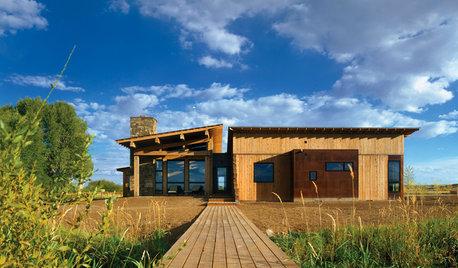



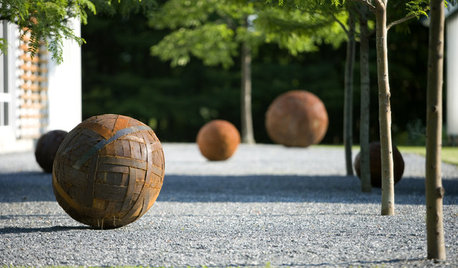











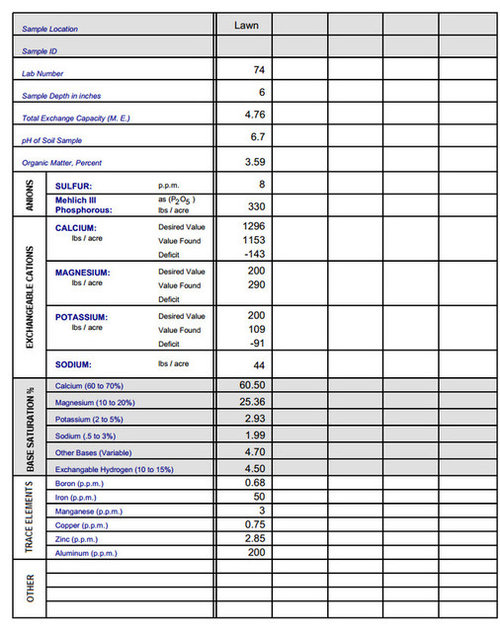
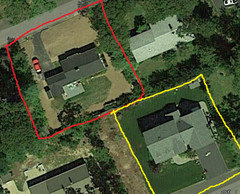
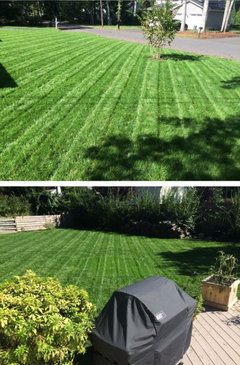


morpheuspa (6B/7A, E. PA)